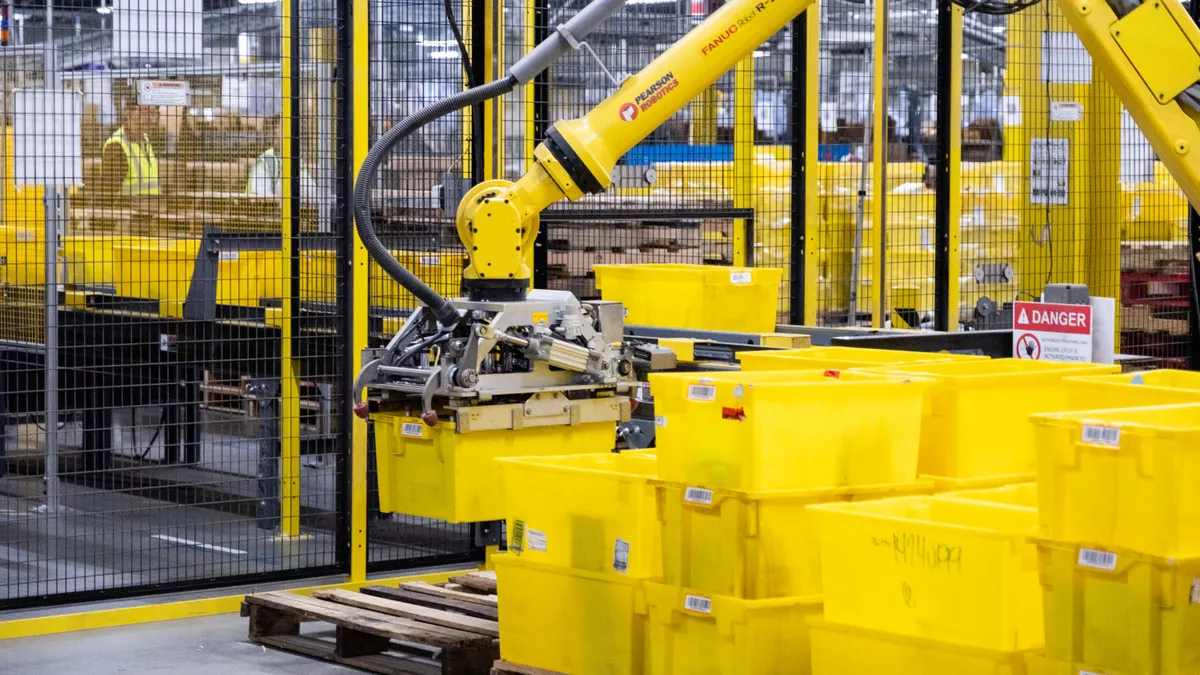Dive Brief:
- Worldwide spending on robotics and drones is expected to reach $128.7 billion in 2020. This includes $112.4 billion on robotics alone, according to a forecast from IDC released earlier this month. This is expected to grow to $241.4 billion by 2023.
- Pick and pack robots are expected to make up 9.6% of market share behind welding (15.6%), assembly (11.6%) and other functions (47.5%). Discrete manufacturing is expected to make up nearly half of robotic spending, IDC said.
- Tariffs could impact this as they remain in place for robotic systems and drones. "This will have a negative impact on both the manufacturing and resource industries, where robotics adoption has been strong. The additional duties will likely slow investment in the robotics systems used in manufacturing processes, automated supply chains, and mining operations," Jessica Goepfert, the program vice president for Customer Insights & Analysis at IDC, said in a statement.

Dive Insight:
Many of the top manufacturers and retail companies have highlighted their use of robotics in the last year.
"We're disassembling, recycling or refurbishing millions of devices every year with the help of Daisy, our recycling robot, and we're pushing the entire global supply chain toward recycled or renewable materials," Apple CEO Tim Cook said on the company's most recent earnings call.
Amazon has credited its robotics investments with saving "significant time in the fulfillment process" and uses more than 100,000 of its robotic drive systems across its fulfillment centers, according to a company blog post. Amazon's ultimate goal is a 'lights out' warehouse that doesn't require human workers, according to Reuters. And it is investing $40 million in a robotics research facility that it says will be the "epicenter of robotics innovation."
The potential benefits large e-commerce companies could see from robotics have led to millions in venture funding flooding into the space, according to a Supply Chain Dive analysis last year.
While many have highlighted the efficiency gains, there are still challenges to adopting robotics technology. The main barrier is cost, according to a recent survey from McKinsey and Company, but this is improving. The same report points out robotics costs have declined 50% since 1990.
IDC's numbers also include drones, an industry that began to see significant momentum in 2019 as the result of regulatory approvals in the United States for commercial drone operations. A mature drone delivery environment is a ways off, but UPS' Flight Forward division has begun working with health systems to deliver medical supplies between buildings on hospital campuses.
As industries focus on the promise of increased productivity from robotics, the communities surrounding these businesses need to plan for what happens when a 'lights out' factory becomes a reality. Robots are more likely to displace the most vulnerable workers. When displaced workers find new jobs its usually at a reduced wage, according to a study by The Century Foundation.
This story was first published in our weekly newsletter, Supply Chain Dive: Operations. Sign up here.














